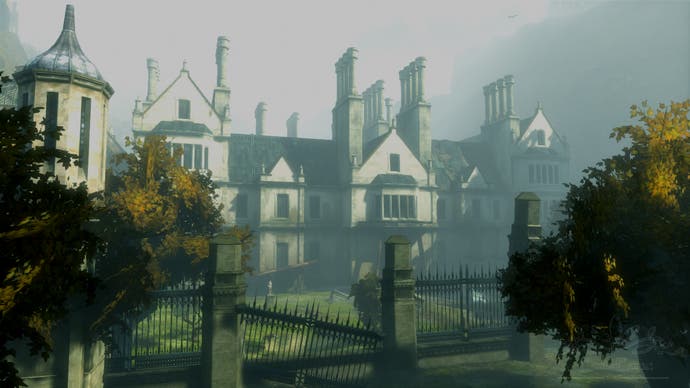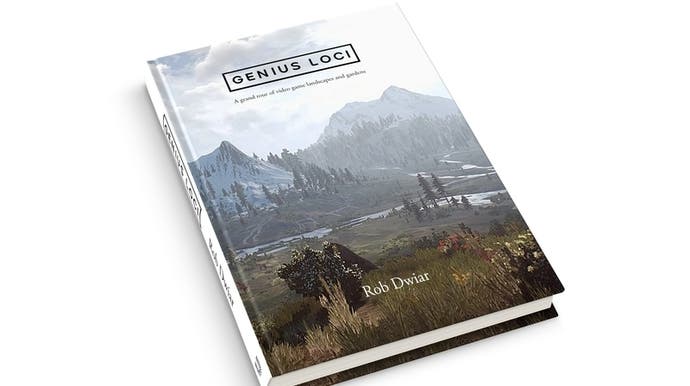Gardening and games converge in Genius Loci, a new book about digital landscapes
"My dad's a very keen gardener...."
Nobody else is doing quite what Rob Dwiar is doing. Dwiar, who works at GamesRadar as a commissioning editor, has spent much of his life as a games writer thinking about gardens. Or maybe he's spent much of his life as a gardening writer thinking about games. Eurogamer readers might be familiar with his work from his lovely articles for Eurogamer. But that's only a part of it. Now, Dwiar has written a book about the intersection of games and landscape. It's called Genius Loci, and it's currently running a campaign on Unbound.
Genius Loci promises "a grand tour of video game landscapes and gardens." It's a richly illustrated thing, a lovely chunky hardback, by the looks of it, covering everything from Assassin's Creed to Dragon Age as it takes in the best of video game landscapes, making sense of the design choices, picking through the flora and fauna, and providing a wonderful sense of context.
I caught up with Dwiar recently over Zoom. Amongst other things, I wanted to know what came first for him - gardens and landscapes, or games?
"Gardens and landscapes first?" he asks himself, and then nods. "Because it seemed like we always had a project in Dad's garden, my parents' garden now. My dad's a very keen gardener, so sort of by osmosis, a lot of it made it to me. Not so much my brother, but certainly to me."
Dwiar says he did some "pretty ordinary A-levels" but didn't have much of a career in mind until he started his gap year. Then it was Dad again. "He sort of said, you know, what do you want to do? How about garden design? I thought: I like that. It's a bit different. I'm going to go down that route - academically, educationally, and then professionally for a bit."
Dwiar had played games since he was nine or ten, though, and it doesn't seem like putting these ideas together - games and landscape - was an enormous leap. "So I think on a very superficial side of it is just how good games can be at replicating or showing off or capturing known or familiar landscapes?" he says. (The classic Dwiar statement is issued with a lot of force, but does have a habit of turning into a question at the end.)

"How good they are at presenting it?" He thinks. "But then, I started writing about it more, more and more, and playing more and more, and seeing it through that lens and being able to go: oh, yeah, I remember doing this bit of this landscape design work, or in my garden, my show garden, I remember doing that thing that is in this game. And you can start to see similar design processes in the landscapes and in games. And you realise that when game designers design landscapes, they must be making similar choices."
Dwiar, along with noted Harvard professor Dr Robert Langdon, is very interested in symbols - in Dwiar's case symbols and meaning in landscape. "Landscape narrative, story, character history, that kind of stuff, which is a massive area of research," he says. "There's lots of it. It's been going on since forever, really. And so when I started to look at games, and you could see, actually, like, these gardens and landscapes weren't necessarily just outdoor places where you do stuff, actually. They're a designed place that ties in very closely to a game story or to a character arc or to a setting. Or it's placemaking. And there's lore behind just a house in the garden and things like that."
Can he give me an example of this kind of thing? He can!
"So one established method back in the past: there was a lot of 'man wanting to show domination over nature.' But show it in the form of what someone who had the money could do with their garden or grounds or landscape?

"So the principles were: you're near your house, presumably, because that's what a lot of your guests and visitors would see more of. Near your house, you would have a garden, which was very ordered, structured, maybe even using overly rectilineal patterns and arrangements. So that you could see that this person was clearly tailoring nature, plants, water, to their whim.
"And then, as you were to get further away into, say, the grounds, if they had enough space, it would get looser and looser, and more natural. There's a really famous one in Italy that ends up with a bosco, which is a wood, and it's still got sort of weird, grotesque sculptures in it. It's great. So you go: the man is the boss over the nature near the house. But if you were to journey away from there, you would experience a journey away from civilised design and architecture."
It turns out that a similar idea is represented in one of Dwiar's favourite games, Dishonored. More specifically in Brigmore Manor, part of a DLC episode. "It's a countryside manor, just outside of one of the districts of Dunwall. And right near the front garden and and close to the back garden you've got very ordered patterned areas of hard landscaping areas, plants in pots, certain sorts of angles, use of focal points, And then you go a little bit further away, it goes into this more wild waterfall around a reedy lake, where that blends into the wider natural landscape around the trees around it and the cliffs around it."
What has fascinated Dwiar about both examples, I think, is that the artifice never ends - it just changes. The wood he mentions in the Italian example from the real world is still as designed as the more obviously structured garden near the manor. It's just designed to look like it hasn't been designed - it's an ideal version of wilderness. And in Dishonored it's even more of a trick, because everything in the game is hand-made, everything is placed with intent.

This in turn is what is so special about Dwiar's work, and why a book of his thoughts is such a lovely prospect. He can see things that a lot of people can't. His background in horticulture has allowed him to read the landscape in a unique way - it's given him a lexicon of meaning that he's then able to share with readers. (Again, a bit like noted Harvard professor, Dr Robert Langdon.)
One of the things I often wonder reading Dwiar's work is: what does he make of the designers working on the other side of the screen? Does he suspect they understand the history of landscape design themselves, or are they - thrillingly - coming to the same conclusions about how landscapes can create meaning and narrative, but coming to those conclusions from their own route through game design?
"That's very interesting," Dwiar says, shortly before we finish chatting. "One of the things I keep saying is that this or that garden looks so designed and has all this meaning into it, it must have been designed by someone who was aware of that stuff. But! It could not have been, right? So yes, I definitely think that there's enough grey area in garden design and landscape design. Making an excellent setting for a level or a mission, can actually create an ideal garden, just in terms of, how do you get from one one end of it to the other? What is there to do? What are the collectibles? What's making up the place?"
He laughs. "All of that adds up over time, right? And that is a good mirror between the two design processes."









